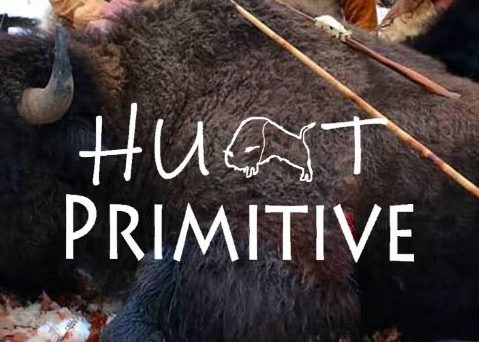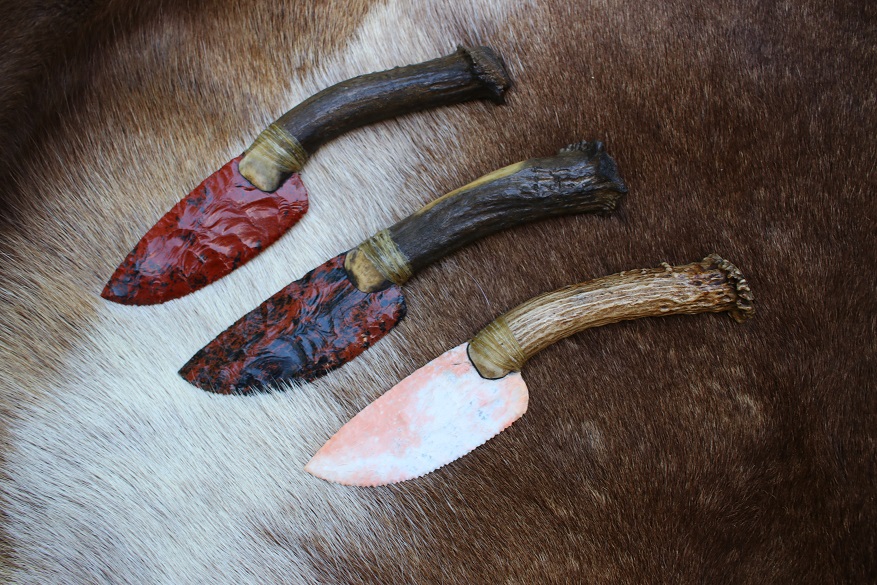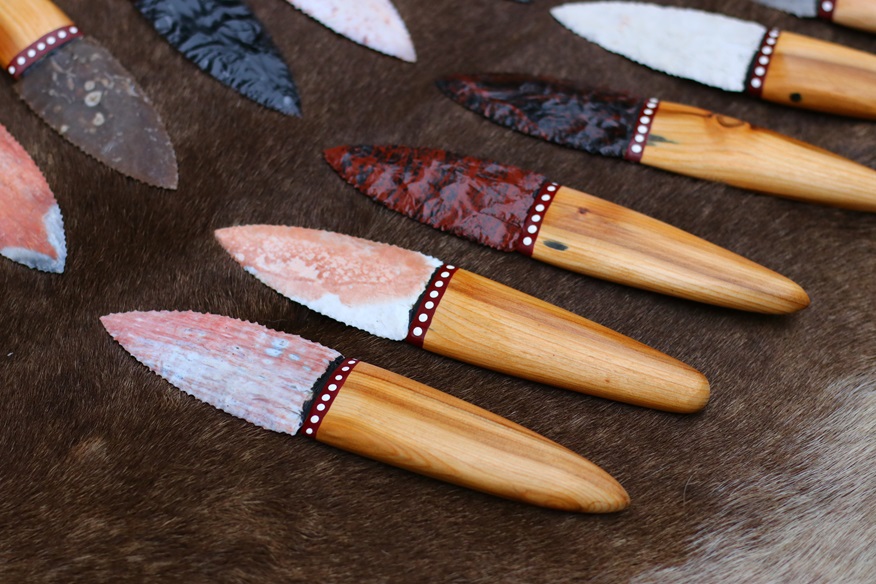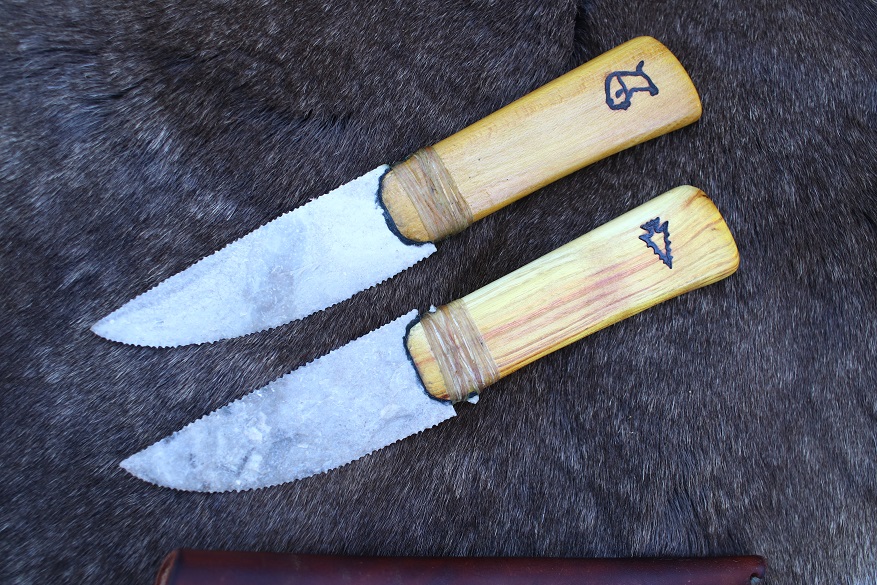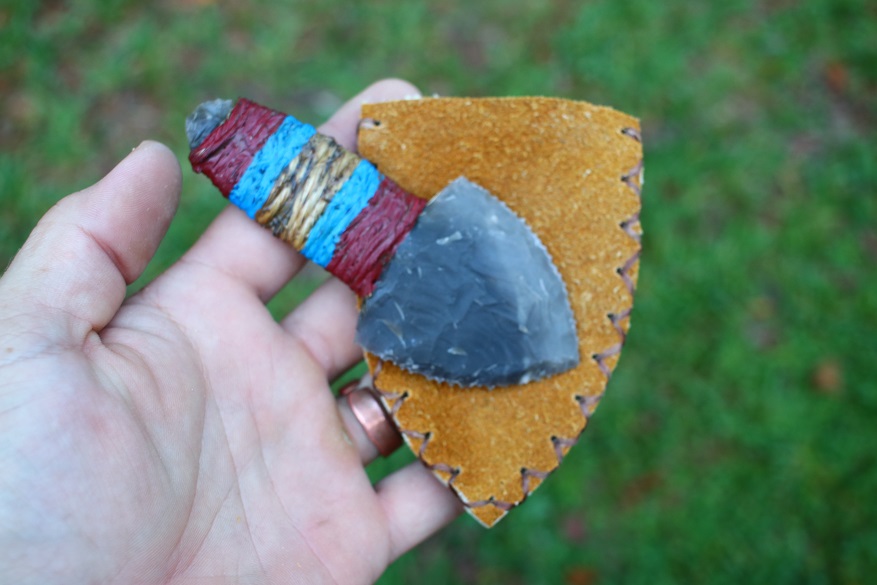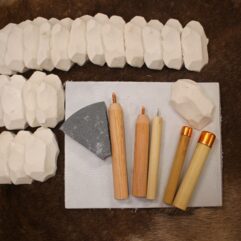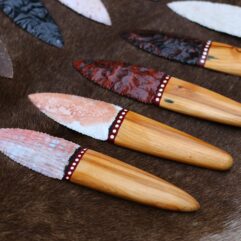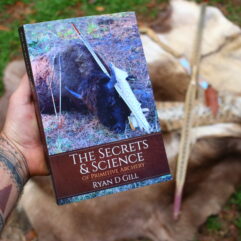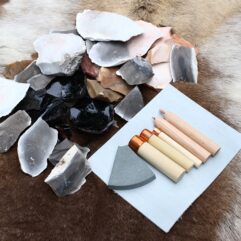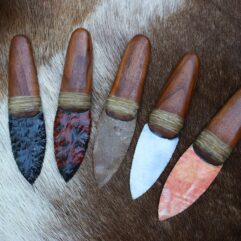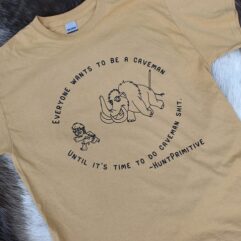HuntPrimitive Stone knives are made with natural materials and designed for real work and function. They are extensively field tested in very large projects such as fully processing and disarticulating large animals such as deer and even Bison! While function is our greatest priority, we also strive to utilize beautiful blades and ergonomic blade and handle combinations for comfortable and efficient work. With all the different styles, we are confident there is a stone knife here just for you!
Note: We try to maintain a pretty good inventory of all styles and rocks, so many knives will ship asap, however, there are some instances where a particular combination of rock and handle is not in stock and build/shipping times could be as great as 2 weeks.
HuntPrimitive's New Deer Skinner knives utilitze our new NeerDeer Antler Alternatives handles for "the perfect handle every time". These are a really nice double edged stone knife option. Click here to be taken to that page
HuntPrimitive's Classic Bison Skinner Stone Knives. These have been a cornerstone of the HuntPrimitive knife brand for a long time. It is hard to go wrong with this classic and utilitarian design. Click here to be taken to that page
Deer Antler handled knives are a crowd favorite. While they are certainly functional knives, these tend to be the favorite for gifts and display pieces as well. Click here to be taken to that page.
The Thonotosassa knives are based on the Thonotosassa Stemmed-Archaic knife blade artifacts. Socket fit into Cedar handles with our classic Red & White dot trim. Click here to be taken to that page.
Our Walnut Handled Deer Skinner knives are a dressed up version of our cornerstone and classic Bison Skinner knives. They bring the same form and function in a classier package. Click here for that page.
The HunterGatherer stone knives have 2 cutting edges on an asymmetrical blade. We like to use the curved edge for animal work (hunter) and the straight edge for plant work (gatherer) Click Here
Neck knives are a popular style of small stone knife work as a necklace. They are fun, handy pieces. Check them out by clicking here
Here you will find a couple videos of our stone knives doing some serious work.
Have Questions on Sharpening Stone Knives? We have you covered with this easy Tutorial!
